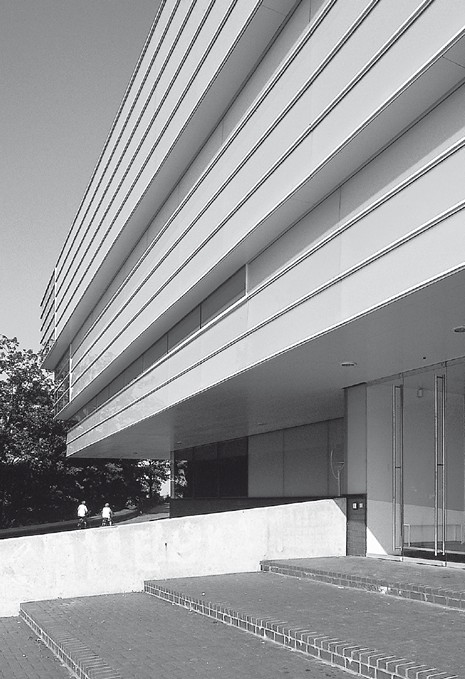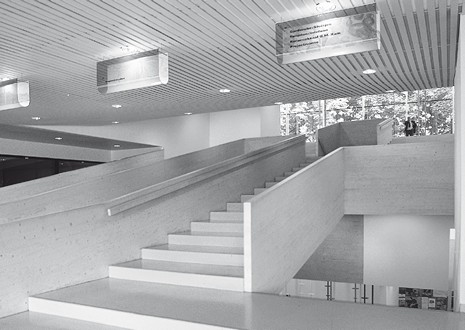Description
The Het Valkhof Museum, erected at the northern end of the triangular marketplace and parallel to the historic town wall, brings together different collections ranging from archaeology to the modern era. It is shaped in the form of a prism laid transversely over a lightly trapezoid ground plan. The 80-metre wide façade of pale green opaque glass leads visitors by means of a three-stage arrangement gradually developing from right to left and opening into transparent corners almost unnoticeably to the asymmetrically positioned entrance. In this way, the building reacts discreetly to the topographic situation, but as for the rest, avoids any historical references or symbolic gestures.
The architect declares that his program is “to create all-inclusive spatial structures that unite construction, function, and visitor circulation into a whole.” Correspondingly, the access, the building’s structure, the organisation, the HVAC, and the lighting technology all determine the form of the museum to the same extent: from the entrance, one already has an overview of the functional structure of the important areas of the museum, accessible directly via the dominant stairway formation that serves statically as the stiffening core. In combination with the second principal element, which immediately catches the eye – an undulating ceiling extended across the whole building – visitors are almost literally drawn in a flowing movement upwards into the real exhibition level. Accessed via a gallery opening toward the city wall and taking in the entire length of the building, it is divided into five parallel ‘streets’ of varying widths. Numerous irregularly placed, diagonally cut wall openings repeatedly generating diagonal views prevent visitors becoming habituated in any way; they allow no less than 88 theoretically possible tours. The moment of movement implicit in the tours is brought into sensory focus in the undulating ceiling that optically summarizes the exhibition area, undulating more intensely at the points where the circulation flow is stronger than it does in quieter places. This moment of movement is what Ben van Berkel considers to be the central motif of his architecture. Discreetly shielded, but still quite visible behind the suspended aluminium strips of this ceiling – which fulfils more than just an aesthetic function – is the entire technology, from the lighting to the HVAC system.
Caroline Bos (ed.), museum het valkhof, Amsterdam, 1999 • Architectural Review 3/2000, pp. 54-57 (Connie van Cleef) • architektur April 2000, pp. 44-49 • Bauwelt 2/2000, pp. 12-17 (Ludger Fischer) • Werk, Bauen und Wohnen 3/2000, pp. 30-37 (Hans Ibelings) • James Grayson Trulove, Designing the new museum. Building a new destination, Gloucester/MA, 2000, pp. 86-91
Drawings
Site plan
Lower level
Ground floor
Second floor
Cross section
Circular exhibition tour variants
Photos

View of main façade and entrance

View of main stairway
Originally published in: Paul von Naredi-Rainer, Museum Buildings: A Design Manual, Birkhäuser, 2004.